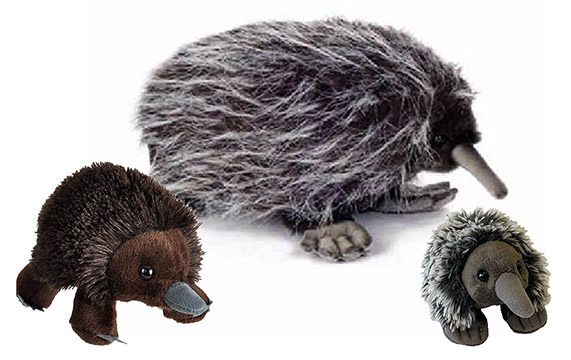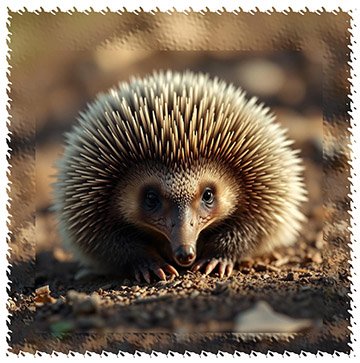

The Echidna (or spiny anteater), Tachyglossus aculeatus, is another unusual mammal from Australia.
It is similar to the platypus in that it lays eggs and suckles its young. And like the platypus, the echidna is a monotreme, or egg-laying mammal. Like an anteater, the echidna slurps up ants and termites with a long sticky tongue coming from its toothless snout. And, like the porcupine, the echidna has long spines interspersed with fur covering its entire body. This little animal will curl up into a ball with the spines sticking out to thwart any attack by a predator, such as a dingo or goanna.
Echidnas are generally solitary animals. They come together during the breeding season (July and August) just to mate. Two weeks after mating a single soft-shelled egg is placed into the pouch and hatches after 10 days. There are specialized hairs within the pouch that the baby clings to, where it suckles milk that oozes from the mother's mammary glands. Female echidnas do not have teats like other mammals.
Tiny at birth, the baby grows incredibly fast. Within the first 45 days the baby increases its body weight up to 500-fold. Though hairless when born, the baby is covered with short spines by the time it leaves the pouch. When it becomes too big and spiky to be carried about, the youngster will be placed in a burrow to which the mother returns every five or six days for suckling. Here it remains until about six months old.
Echidnas are found throughout the Australian continent and Tasmania. They inhabit a wide variety of terrains from cold mountains to deserts. In cold locales they hibernate and in very hot areas they will keep cool by staying in their burrows. They are not commonly seen, but are not considered threatened.
The plush toy Echidnas shown at top are made by Hansa and Wild Republic. Find them at our sponsor's online gift shop: www.jeanniescottage.com.




